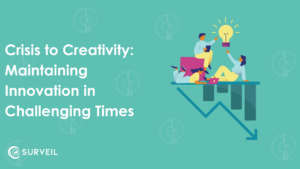From smartphones to laptops, cables to accessories, the rapid development of the technology we all rely on has given rise to a mounting sustainability problem: tech plastic waste.
The rapid evolution of technology, coupled with an increased consumer appetite for electronic devices, has led to the emergence of e-waste as one of the fastest-growing waste streams – and it’s a problem on a global scale.
Between 2010 and 2019, the product of electronic waste experienced a 60% surge globally. That means a staggering 50 million tonnes of e-waste was generated every year, with projections indicating a substantial increase to 75 million tonnes by 2030. Aside from the pace of tech advancements, this surge in electronic waste can be attributed to a number of factors, including heightened consumer demand and shortening device lifespan.
The Impact of Tech Waste
So what effect does this have on the environment? Firstly, burning electronic tech waste can release harmful pollutants, contributing to air pollution which can have severe health implications for life on earth.
Additionally, according to the ‘New Circular Vision for Electronics – Time for a Global Reboot’ report, the improper handling of e-waste is resulting in a significant loss of scarce and valuable raw materials, including precious metals such as neodymium (vital for magnets in motors), indium (used in flat panel TVs), and cobalt (for batteries).
Even the commonly known method of landfill dumping has an impact. Toxic materials seep through the soil and eventually make their way to groundwater, affecting both land and sea animals. This can also negatively impact people living in developing countries where a large proportion of electronic waste is dumped.
If you’re imagining that recycling tech waste might be the answer, there’s first the hurdle of separating mixed materials to overcome. Electronic devices often combine many different materials – including plastics, precious metals, glass, and various alloys – to achieve the functionality demanded by consumers. While essential for the device’s performance, this integration of multiple materials presents a labour-intensive, almost-impossible challenge.
How the Tech Companies Are Responding so Far
The tech industry is taking notable steps to adopt sustainable practices and work toward more eco-friendly processes. For example, Microsoft has itself a series of ambitious sustainability goals, including becoming carbon negative by 2030.
In 2021, as part of their sustainability journey, Microsoft released a plastic mouse made from recycle ocean waste – marking a huge step forward for the tech industry to meet sustainability demands.
Meanwhile, businesses are responding to sustainability needs by meeting certification standards and programs for environmentally responsible tech production. For example, the ISO 14001 Certification provides a framework for environmental management systems which can be achieved by implementing and maintaining effective environmental management practices.
But still, there’s plenty of work to be done.
What the Future Holds
Although tech waste obstacles – such as effective recycling and short gadget lifespans – remain, the future of sustainable tech waste can look greener. Opportunities for innovative products and improved processes have arisen, allowing businesses to consider small and big changes they can make to do their part in the movement to a more sustainable world. Emerging technologies in material science and recycling methodologies show promise in addressing the intricacies of tech plastic waste.
Failure to capitalise on momentum, however, could have lasting consequences for the environment; without a shift towards responsible recycling practices, the long-term impact increases the degradation of ecosystems.
The future of sustainable tech waste management, therefore, demands a collective commitment to overcoming obstacles, fostering innovation, and envisioning a circular economy where electronic devices are designed, produced, and recycled with environmental considerations at the forefront.
Want to learn more about IT leaders as sustainability leaders? Take a watch of our recent webinar here.






